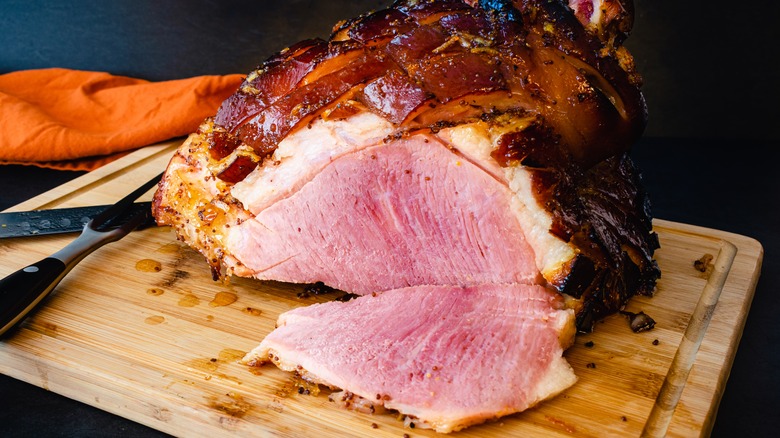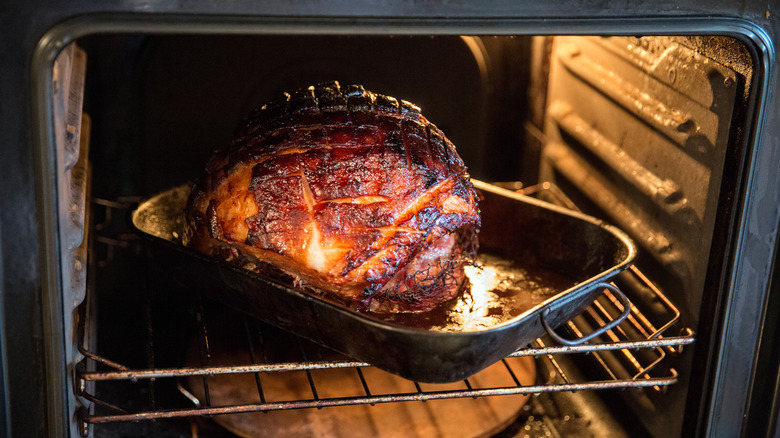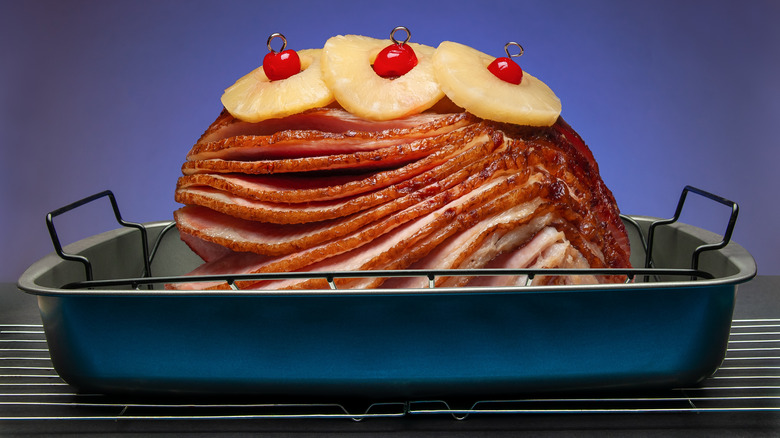Is It Safe To Cook Frozen Ham Without Thawing?
Defrosting a frozen ham might be one of the most time-consuming activities in the kitchen. Combined with the long cooking times of traditional baked ham, which can take as long as four hours to finish up, even the most passionate pork lovers choose to leave this item behind at the grocery store. But few cooks are aware that raw pork can be cooked straight out of the freezer, and that rule does not exclude frozen ham.
According to the U.S. Food Safety and Inspection Service, both cooked and uncooked meat can be safely placed directly under heat for consumption. In fact, the labels on some of these items may specify to cook frozen rather than thawing to avoid any pathogens from growing. Regardless of whether you're using your oven, stovetop, or even microwave to cook your frozen ham, be sure to cook it until it has reached an internal temperature of 145 degrees Fahrenheit. Otherwise, you risk undercooking your ham and exposing yourself to foodborne illness.
Plan to cook your frozen ham for a considerably longer amount of time
Reaching the desired internal temperature that will kill most microbes in hams takes a considerable amount of time. This wait becomes exponential when it comes to frozen hams, as cooking frozen ham without thawing often leads to cooking times 1.5 times as long. But even though a 50% increase in cooking time sounds nightmarish on paper, keep in mind that cooking ham straight out of the freezer bypasses the dreaded thawing process.
If you'd like to thaw your ham, the U.S. Department of Agriculture recommends a thawing time of approximately 30 minutes per pound of ham if defrosting in cold water. And if slow-thawing in the fridge, plan for four hours per pound instead. Many people recommend putting aside a few days in advance to let their frozen ham thaw in the fridge.
Cooking a frozen ham should never be left to the last minute, but it certainly doesn't take up as much of your schedule (or your fridge space) as thawing does.
Wrap your frozen ham in tin foil to avoid a burnt crust
One of the biggest appeals of baked ham lies in the way an oven's dry heat can create a crunchy, browned exterior, giving this cooking method an edge over faster, less conventional methods such as using a pressure cooker. However, due to the longer cooking time in the oven, the crust of frozen hams often runs the risk of overcooking. To avoid this issue, you can place your frozen ham in a deep roasting pan and cover the top with aluminum foil. This heat-resistant layer will make it harder for moisture to escape your ham, allowing you to achieve an edible surface that you can coat with pineapple and other spices.
The aluminum foil will also help trap any excess juices from your frozen ham into the bottom of your pan, allowing you to collect delicious drippings that can be turned into stock. Just remember to save your leftover ham bone to further fortify the broth at the bottom of your pan with its savory flavors.



